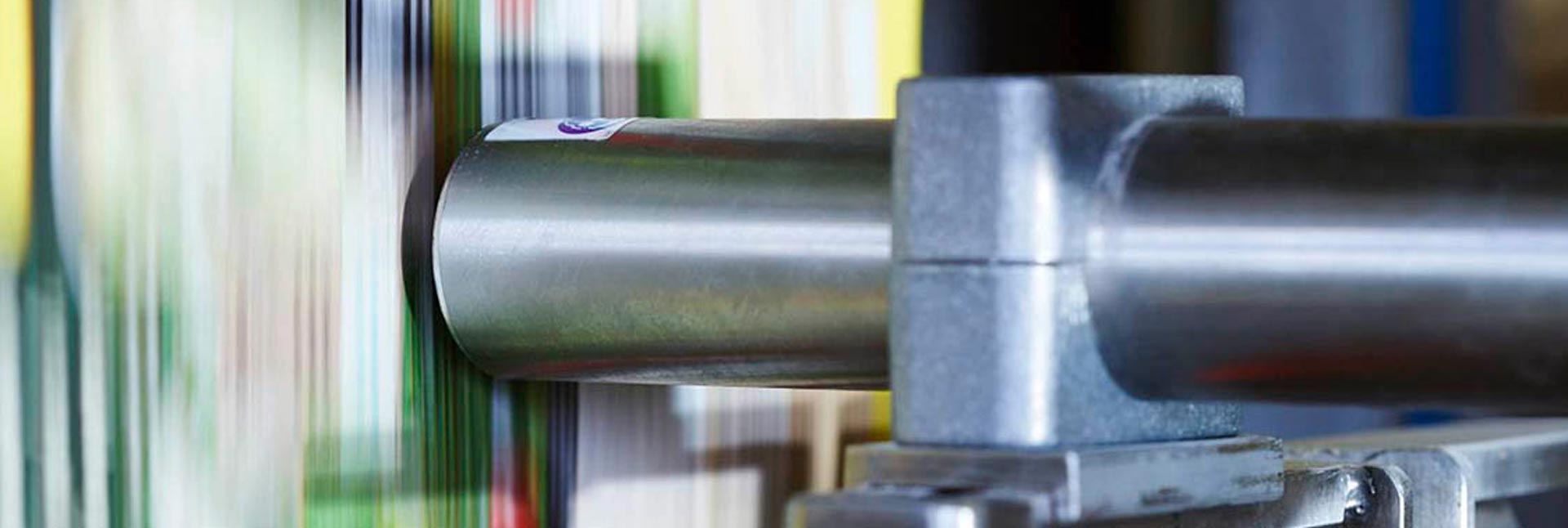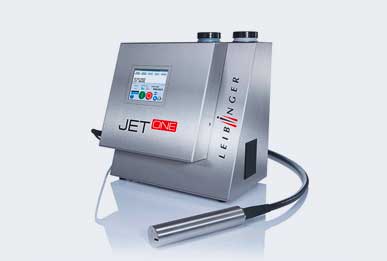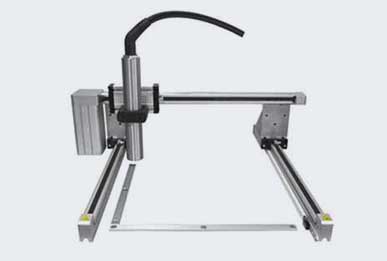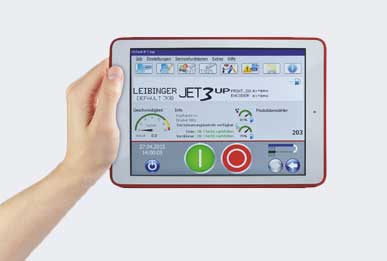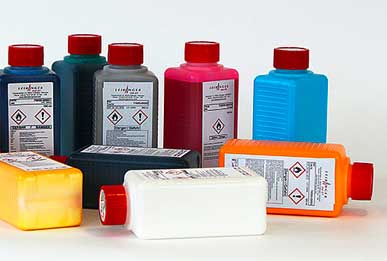Looking to use piezo ink jet technology for industrial printing? For the right application, it will do a wonderful job. But if you are looking for something to give you productivity on an industrial production line, you could be making a mistake. Here’s an explanation why...
The beauty of piezo ink jet printing
The technology behind piezo ink jet printing is fascinating. It relies on the piezoelectric effect of certain substances, which distort or expand when a current passes through them. If you fit piezoelectric elements in an ink reservoir, you can make a tiny electric impulse force a tiny drop of ink through a nozzle. When a number of these nozzles are arranged together, it creates a printing system that can print onto solid objects at glorious high resolution.
It is a neat system that is frequently used in graphics applications, where fine print or pretty fonts are required. But in the no-nonsense world of high-speed factory production, do you really want fine and pretty? Or hard-working, fast and reliable?
Industrial printing in the real world
Most manufacturers and producers print codes, symbols and text onto products and their packaging because it’s necessary. It helps the supply chain identify products and manage the distribution of those products, and it helps customers recognise them and trust them (eg expiry dates on food). They don’t care about the font they use – it is just a necessary part of production. And for most of these applications, the high-legibility output of the more reliable continuous inkjet printer is perfect.
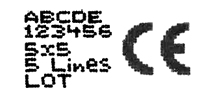
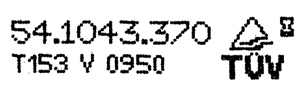



Where piezo ink jet falls short
The technology that brings the fine resolution is also piezo’s downfall. One shortcoming is that piezo printers tend to be used with water-based inks rather than fast-drying solvent inks. This is because the nozzle can quickly become clogged as tiny amounts of ink become attached when they dry on exposure to the air, and this requires regular cleaning. Aqueous inks will not clog – but nor will they adhere as readily as solvent-based inks to shiny, water-repellent surfaces such as bottles and plastic. This is not a problem if you are printing onto absorbent surfaces or specially treated paper – but fast production lines need quick-drying ink.
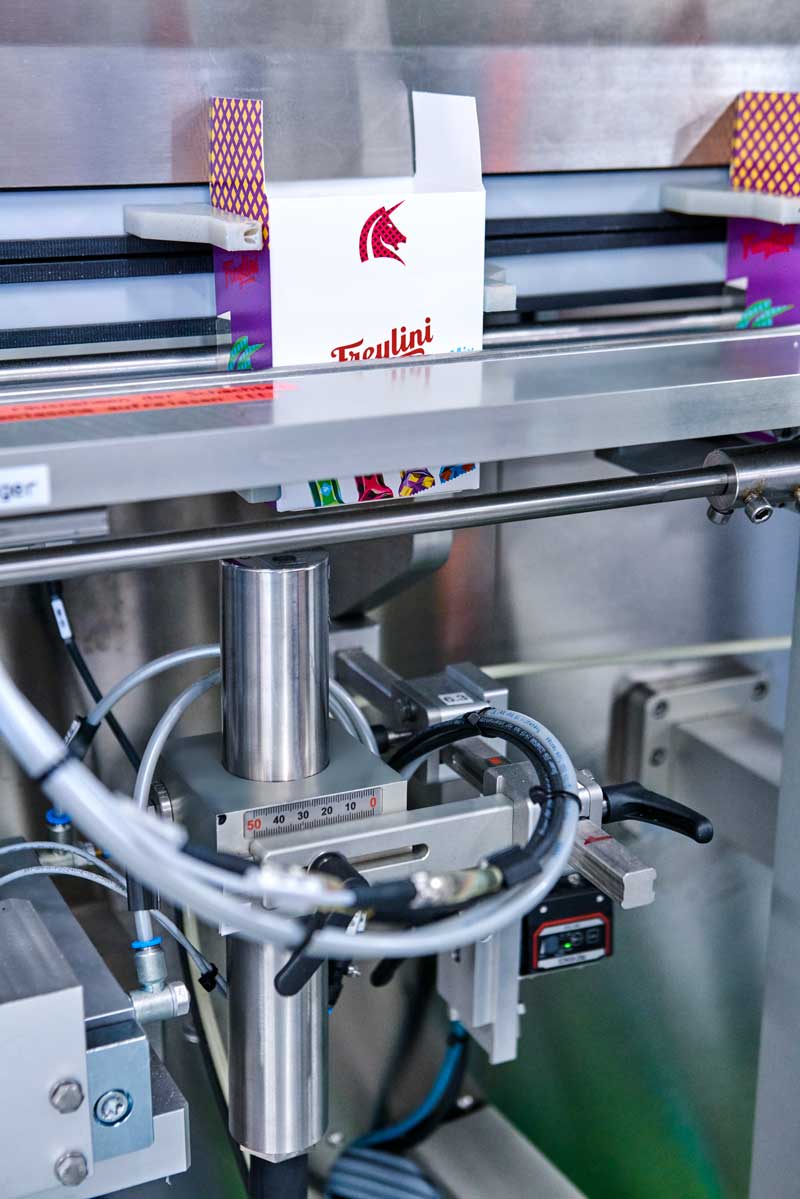
Need for speed – and economy
Like a vintage car, piezo looks great but doesn’t go very fast. In production environments where thousands of soup packets, beverage bottles or cardboard boxes need printing ever hour, that’s a problem. While a standard speed for a piezo ink jet printer is approximately 240m/min, LEIBINGER printers operate at up to 800 m/min (cable marking up to 1,000 m/min).
Continuous inkjet technology is also very frugal in terms of operating energy. LEIBINGER printers use a combination of an air compressor and a liquid pump. It is so efficient that the liquid pump only has to operate once every seven seconds, while the air compressor is switched on just once a day. The result is lower operating costs, and a much longer working life.
Frozen food >>>
Detergents, home care and cleaning >>>
Electronic and electrical devices >>>
Metal and steel >>>
Industrial-grade flexibility of CIJ printers
Perhaps the biggest limitation of piezoelectric inkjet is that the ‘drops on demand’ are placed directly onto the print surface – which means the printing unit needs to be within millimetres of the product to be printed. This makes installation less convenient and slows the process down still further. CIJ printers, however, ‘project’ the print over a distance of a few centimetres.
CIJ printers are also more flexible in their configuration. They can be installed to print onto products from any direction, and therefore onto any part of the product. Piezo printers are not able to print from underneath. Manufacturers of CIJ printers such as LEIBINGER produce a range of installation accessories and brackets that enable the printers to be located above, below or beside the production line
With these accessories, and a powerful range of software options, LEIBINGER printers are designed to be both easy to use and easy to install. When you combine this convenience with the speed and flexibility, it is clear that these are clearly printers designed for the high-speed, hard-working, cost-conscious world of industrial printing.
JET One
It all starts here
Attractively-priced entry-level printer offering two-line printing on a variety of materials and featuring unique Sealtronic technology. more >
JET3up
The advanced CIJ solution
Advanced, feature-rich CIJ printer to handle complex and challenging coding & marking applications. Prints 5 lines. Performs at speeds of up to 10 m/s. more >

